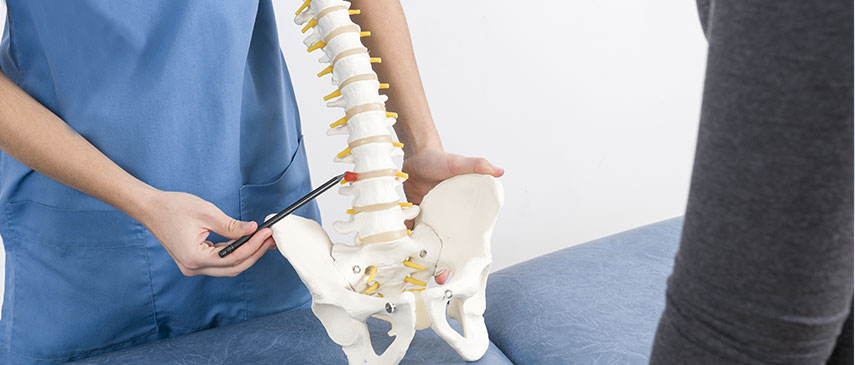A herniated disc can lead to a lot of problems, with back pain being a very common symptom. Discs are pieces of rubbery tissue that sit between bones on your spine to add cushioning. When functioning properly, your spinal discs help keep your spine connected while keeping a healthy distance between vertebrae and nerves. A disc becomes herniated when it slips or is ruptured, typically by wear and tear. The gradual nature of herniated discs means they become more likely as a person ages. However, they can affect anyone regardless of age. If you have a herniated disc, knowing how to treat it is important. Physical therapy can be a crucial element of your treatment approach. Understanding the most necessary parts of any treatment plan can help you make strong decisions about your health care. When considering how best to treat your herniated disc, remember to account for each key part of treatment.
Understanding how to treat a herniated disc: 5 key parts of treatment
- Comprehensive evaluation — The first part of treating a disc injury is a thorough evaluation. A physical therapist can evaluate your condition while considering more than your injury. Physical therapists often evaluate each patient’s medical history and perform a thorough exam to ensure a deeply personalized approach. Having a strong understanding of your past and present health can provide your physical therapist with valuable information while developing your treatment plan. An initial evaluation can have a major impact on the success of your future treatment, so it is important to make sure you start with an accurate assessment.
- Pain management — One of the leading symptoms of a herniated disc is pain. Since disc herniation is most common in the neck and lower back, these are the areas most often affected by pain. Depending on the region and severity of your pain, your physical therapist will apply specialized treatments designed to offer quick relief. Hands-on physical therapy techniques, collectively called manual therapy, can be essential to pain management. Joint mobilization is one manual therapy technique that can help reduce pain and improve your flexibility. Your physical therapist can also help reduce inflammation in the area. Having less inflammation often leads to reduced pain in the tissue surrounding your injured disc. If you are looking for a reliable approach to spinal pain relief, choosing physical therapy is an excellent decision.
- Core exercises — Your core muscles play a vital role in supporting your spine. When these muscles are weak, they can contribute to spinal issues like herniated discs. By strengthening your core muscles, you can improve your body’s spinal support. This can relieve pressure on your herniated disc, paving the way to lasting relief. Your physical therapist will design an exercise program tailored to your recovery needs and physical condition. Planks and curls are just some of the exercise types that might be included in your treatment plan. By engaging your core muscles, you can relieve your symptoms and improve your overall physical health.
- Manual therapy — In addition to pain relief, manual therapy can have many other benefits. Soft tissue mobilization is one kind of manual therapy often used to treat a herniated disc. This technique focuses on releasing tension in the tissue surrounding the injured disc. By manipulating your soft tissue, a physical therapist can help increase your spinal flexibility and make you feel more comfortable. Specialized spine care techniques can offer great benefits as well. With manual therapy, you can experience short-term relief coupled with long-term improvement.
- Aquatic therapy — The spine is a sensitive region. While exercise can have many advantages, certain exercises may actually be counterproductive. Exercises that put excess stress on your spine can actually make your symptoms worse. With aquatic therapy, you can get the exercise you need without worrying about putting too much strain on your discs. Aquatic therapy happens in a relaxing environment, meaning you can relieve stress in your mind and body. For many patients, aquatic therapy is especially effective when combined with other treatments like manual therapy. By receiving holistic PT care, you can see how an integrated approach helps in treating a herniated disc.
Licensed physical therapists at Border Therapy Services know how to treat a herniated disc
Now that you know how physical therapy works to treat a herniated disc, you can take the next step toward receiving the care you need. At Border Therapy Services, our team is ready to help you. We are here to listen to your concerns and address them with our professional services.
Call us or request an appointment today to get treatment for a herniated disc.

